| Botanical Name |
|
| Family |
Boraginaceae - The forget-me-not family. |
| Pronunciation |
loh-boh-STO-mon froo-tih-KOH-sus |
| Common Name(s) |
|
| Plant Group |
- Shrub A woody plant of relatively low height, having several stems arising from the base and lacking a single trunk; a bush.
|
| Plant Size |
- Medium to Large
| Tree | 15m to 20m |
| Shrub | 2m to 3m |
| Perennial/ground cover | 60cm to 75cm |
| Bulb | 60cm to 1m |
| Succulent | 60cm to 1m |
|
| Position |
- Sun The area is in full sun for all or most of the day, all year round.
|
| General Information |
- Drought Tolerance: High The plant is well adapted to arid conditions; it can survive long periods of drought and high temperatures without extra water.
- Evergreen Plants that have leaves all year round.
- Frost: Tender A plant that will not survive any frost or low winter temperatures.
- Salt spray tolerant A plant with specific adaptations enabling it to grow in a saline environment.
- Sand tolerant Plants adapted to survive in nutrient poor, very sandy soils.
- Water Wise Plant species originating from low rainfall regions that require less water to survive and thrive than other plant species.
- Wind Tolerant Plants able to withstand the effect of strong winds.
|
| Specific Information |
Lobostemon fruticosus is a rounded shrub, branched from the base with rough, grey-green leaves and an abundance of delicate looking flowers. This fast growing shrub is well suited to coastal and seaside gardens, the small leaves and stems being covered with white hairs, a protective and water saving device. The shrub will flower within the first year.
|
| Ad Break |
|
| Flowers |
| Description |
bell-shaped with pink buds opening with lobes shading to blue, from a pink center
|
| Season |
- Spring to Summer Plants will seldom bloom for the entire season as given in the list, but should flower during a period within these parameters.
|
| Colour |
|
| Growth Rate |
- Very Fast Specifying growth rate can be very misleading as there is considerable variation of growth rate depending on type and species of plant, available water, supplementary feeding, mulching and general care, as well as the plants suitability and adaptability to the garden environment.
|
| Plant Uses |
- Attracts bees, butterflies or other insects This plant attracts insects which can be food for birds or other creatures in your garden.
- Attracts Birds This plant will attract birds.
- Border A strip of ground, at the edge of a driveway or path in which ornamental plants or shrubs are planted.
- Boundary A plant useful for planting around the edges of the property to form a green or colourful backdrop, an impenetrable hedge, to hide walls or create privacy.
- Filler Either a fast growing tree or shrub used temporarily to fill in an area while the permanent plants grow to a desired size, or a plant used to fill gaps in borders or beds.
- Foliage Plant Plants grown because their foliage is colorful or unique. Many of these plants have insignificant flowers.
- Rock Garden An area constructed of larger rocks, arranged naturally, to emphasise the use of stones as a main element. Generally plants used do not need a lot of care.
- Suitable for coastal gardens Plants adapted to dry, sandy soil, forceful wind, limited rainfall and intense sunlight.
- Suitable for seaside gardens Plants that will survive the hostile environment of harsh salty winds, dry sandy soil, irregular rainfall and heat found in seaside gardens.
- Suitable for smaller gardens Such plants do not have invasive root systems, remain small or controllable and can often be grown in containers.
- Wild Garden An indigenous garden planted for the benefit of wildlife and birds. Provides food, water, a variety of mini-biomes and no poisonous chemicals are used.
- Windbreak Trees planted in a row to form protection from prevailing winds by breaking the force of the wind, thereby reducing wind damage.
|
| Distribution and Habitat |
in the Western Cape from Namaqualand to the Cape Peninsula and Worcester, mainly in fynbos vegetation from sandy flats to rocky mountain slopes
|
| Planting Suggestions |
Plant in full sun and well-drained soil. In the Cape they are best planted during winter to allow plants to establish themselves before the warm, dry summers, whereas in other regions it is best to plant in spring so they have the benefit of strengthening before the cold weather of winter. Water them throughout the year for best results.
Lobostemon fruticosus is not a long lived plant and after a few years will become woody. To extend the life of older plants I cut them back after seeding and they respond well and quickly grow back. After 8 to 10 years it becomes necessary to remove the plant completely. For two (so far) seasons after I removed one of my older specimens, I have been rewarded by dozens of seedlings in the area where the plant had been, giving me more than enough plants for potting for the nursery and have planted a wind breaking hedge around one of my beds.
|
| Medicinal Uses |
The Afrikaans name 'agtdaegeneesbossie', meaning eight-day-healing-bush, refers to the belief that this plant could heal a variety of ailments within eight days. Lobostomon fruticosus was used by the KhoiKhoi, the settlers and Malays. A tea made of the leaves was said to cure ringworm in humans and animals. The fresh leaves and branch tips were used with other herbs to make an ointment for eczema.
|
| Ad Break |
|


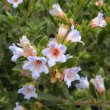
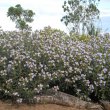
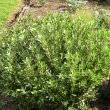
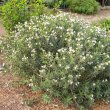
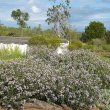
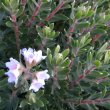


Comments
Lobostemon fruticosus
Living in Benoni (Gauteng) how can I get a plant of the above - or seeds?
Lobostomon fruticosus seeds
Hi Barbara
You can try the following indigenous nurseries in Gauteng for this plant, although when I lived there I was usually unable to find any of the Western Cape shrubs - probably because most of them are not frost resistant.
Random Harvest 0825530598 / Plot 57 college Rd Muldersdrift.
Witkoppen Nursery Jhb/Bryanston 011 7052703
Simply Indigenous Pta Skeerpoort. 012 2071077
Grow Wild 011 4658857 / 102 Dunmaglass Rd Glenferness Midrand.
Failing that, I do have a few seeds left from my autumn planting. If you wish to buy these please contact me at kumbulanursery@gmail.com and I will send you all the details.
Lorraine
I have come across a white
I have come across a white lobostemon in the road reaerve near darling. I never saw a white one before - how common are they? not just very pale blue, quite intensely white. I have tried many times to grow lobostemons from cuttings,, unsuccessfully, but I would love it if this one was available.
White Lobostemon
Hi
I managed to find two varieties of Lobostemon, usually blue, but that have produced white flowers It appears that these are uncommon and most unlikely to be commercially available. I believe the only way you could obtain the plant is through cuttings. Take a look at the following:
Lobostemon marlothii:
http://www.ispot.org.za/node/163171
Lobostemon montanus:
http://www.plantzafrica.com/plantklm/lobostmontan.htm
As to cuttings, I tried for a few years but never had positive results and finally gave up. My cuttings always rot. The Plantzafrica reference above has information about growing cuttings that may help you.
Kind regards
Lorraine
lobostemon-fruticosus
Hi there
A client of mine has this delightful plant in her garden in Sandton and it has taken me weeks and lots of asking around to find out what the plant was. Eventually Andrew Hankey at the Botanical Garden and Linda de Luca of Random Harvest agreed that this is what it was.
You mentioned seeds - please let me know how I can order some from you.
Kind regards
Rose
072 268 4659
Seeds
Hi Rose
As the nursery is closed, I no longer collect seeds. Try the following seed suppliers:
http://www.sanbi.org/gardens/kirstenbosch/kirstenbosch-nbg-seedroom
silverhillseeds.co.za
http://www.seedsforafrica.co.za/
Kind regards
Lorraine
Discuss this plant
Share knowledge, ask a question or give an experience.